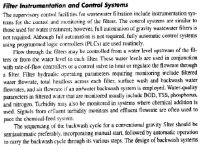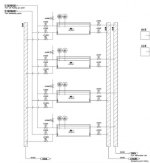dear,
I was searching the net in order to find how to measure filter clogging in sand filters, I found something from degremont that, when a pre-set degree of clogging is reached, filter washing must take place.
But how clogging is measured? I found in other places that they are using PDT for measuring clogging, but I could not understand how this sensor works.
I really appreciate any feedback on this issue,
thank you,
Charbel
I was searching the net in order to find how to measure filter clogging in sand filters, I found something from degremont that, when a pre-set degree of clogging is reached, filter washing must take place.
But how clogging is measured? I found in other places that they are using PDT for measuring clogging, but I could not understand how this sensor works.
I really appreciate any feedback on this issue,
thank you,
Charbel








